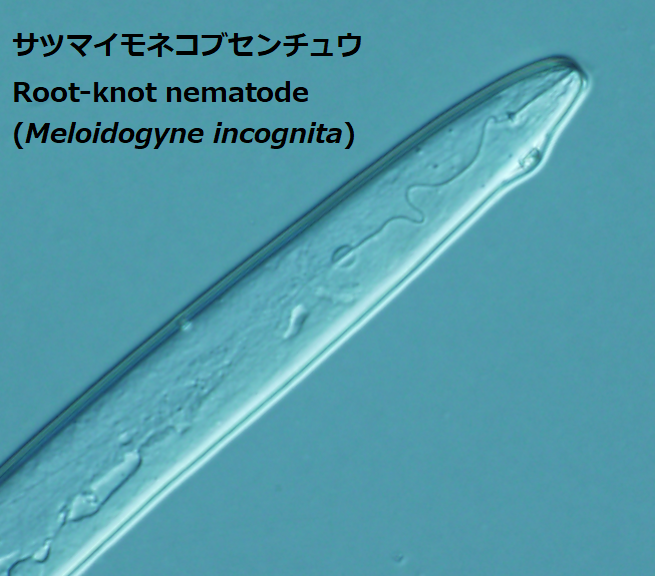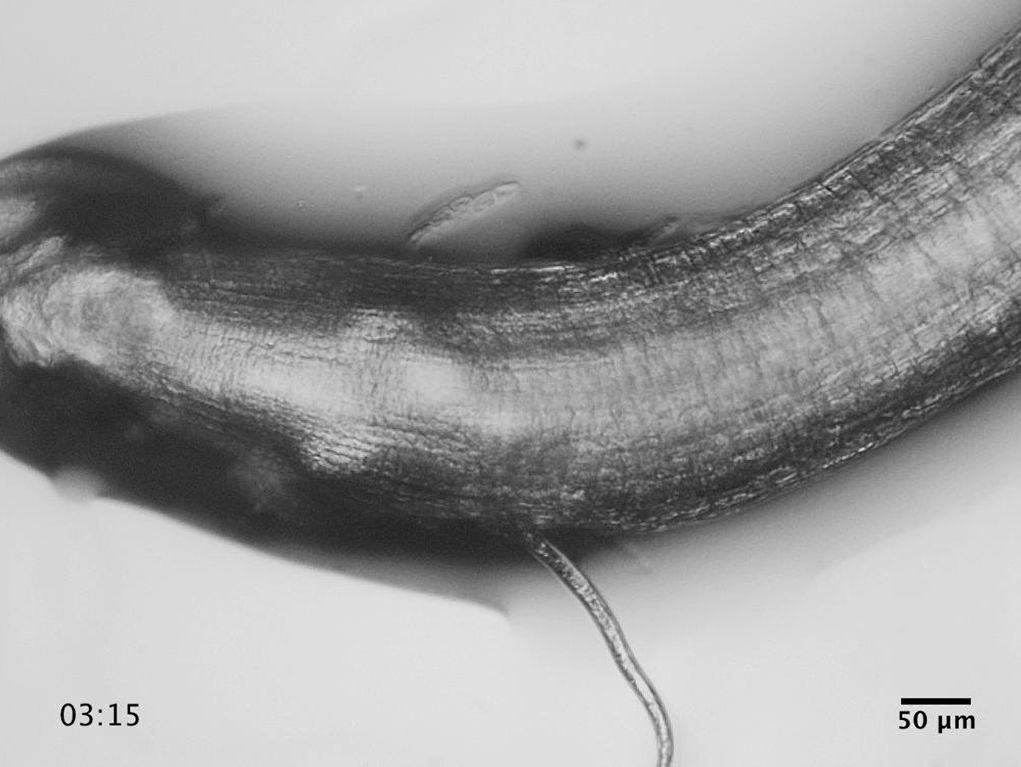Nematode research
What are root-knot nematodes
Nematodes are mostly small (0.5~2 mm) multicellular worm-like
animals. Despite being almost invisible to the naked eyes, nematodes
are extremely diverse in appearance, lifestyle and habitat.
Nematodes can be found from arctic tundra to tropical forests and
almost every habitat in between on earth, with ~15,000 species they
account for ~80% of individual animals on earth. Not surprisingly, they
play very important roles in the ecosystems they live in.


Some nematodes live within the bodies of plants or animals while
leeching off nutrients from them, making these nematodes parasites.
Often these parasitic nematodes cause diseases in the plants and
animals they live in. One of the best-known plant-parasitic nematodes
is the root-knot nematodes (RKN for short, Meloidogyne incognita).


RKN are hatched from eggs in the soil. After hatching, they rely on
lipids accumulated in their bodies as energy source, and may live for
a long time without feeding. In the laboratory, they may be kept for
over a year in 12°C. In soil, RKN recognizes certain chemicals from
plant roots, then approach the plants. RKN secrete enzymes to
dissolve plant cell wall to invade the root. After, RKN move within
the root (vasculature). RKN chooses a root cell to feed on, and uses
a straw-like organ call “stylet” to pierce the cell and inject many
proteins call “effectors”. These effector proteins can transform plant
cells into RKN feeding cells, as well as suppress the plant’s immune r
esponse. The plant cell injected with effector proteins multiplies its
1 nucleus to 5~10 (multinucleation) and enlarge in size. These are
known as giant cells. Cells around giant cells also divide rapidly, and
these cells make the RKN-infected root look swollen to form the
eponymousroot-knots.


Giant cells make many different proteins which RKN feeds on using
the stylet. When RKN is fully mature, its head remains attached to
the giant cell, while its tail emerge from the root to secrete a jelly-like
substance to lay eggs in (egg mass). Once the soil has been
contaminated with RKN, crop plants grown from such soil will
become substantially diseased.


Nematode chemotaxis
The infective RKN larvae search for host plants by following gradients
of chemicals secreted by plants. This kind of behavior is known as
chemotaxis. Since RKN are obligate parasites and must infect plants
to survive, chemotaxis is extremely important for RKN. The type of
chemicals that attract RKN can also tell us what kind of plants RKN
prefer to infect.
Our laboratory is working on isolating and identifying chemicals
that regulates RKN behaviors. Currently there are no effective
treatments against RKN infection in agriculture. The
manipulation of RKN chemotaxis may be a robust and
environmentally-friendly strategy to protect crop plants from
infections. We are working on isolating more RKN attractants,
as well as identifying the RKN genes involved in sensing these
attractants.
Image credits:
Blumenthal and Davis (2004) Nat. Genet. 36(12): 1246-1247.
Yamaguchi et al. (2017) Front. Plant Sci. 8: 1195.
Oota et al. (2020) Mol. Plant 13(4): 658-665.
Tsai et al. (2019) Mol. Plant 12(1): 99-112.
